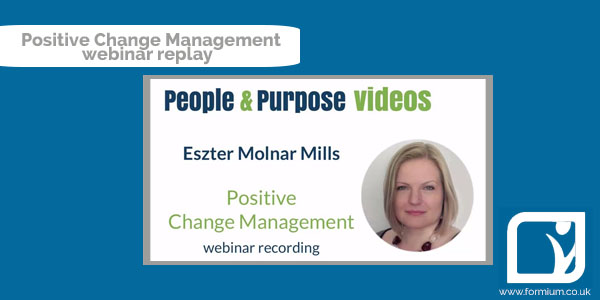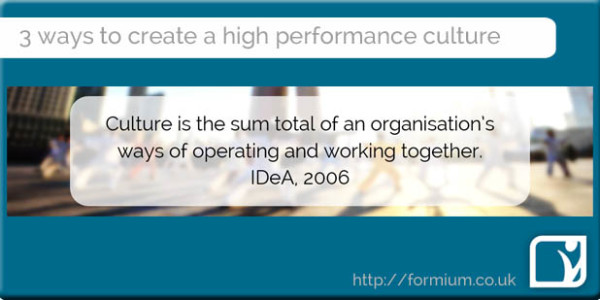Does culture matter? Recent research carried out by James Heskett at Harvard Business School suggests that 20%-30% of corporate performance can be attributed to a positive, strong performance culture. As Edgar Schein, probably the most prolific and oft-quoted researcher and author in the area of culture, suggested: “The only thing of real importance that leaders do is to create and manage culture. If you do not manage culture, it manages you and you may not even be aware of the extent to which this is happening.”
High performance cultures embrace innovation and empower people to contribute to that innovation. They espouse values on taking calculated risks, being innovative, being supportive, and being a learning organisation. Amanda Whittaker Brown of IDeA identified four specific signs of a performance culture and a culture where high performance is an integral part of how the organisation works:
- People feel comfortable talking openly about performance.
- Individuals know how what they are doing makes a difference.
- People share a commitment to achieving shared objectives.
- When there are problems, people work together to resolve them.
There are three specific actions leaders can take to create a high performance culture in their organisation:
1. Co-create the desired culture
Involve others in designing and shaping the team or organisational culture. In order for you to be able to identify and articulate what a desired culture would be, you need to understand and be able to communicate the vision for the organisation, its purpose and how individuals and teams can contribute. Your team need to be able to understand the difference that they are making.
Once the vision for the organisation or the team is clear, consider whether the current culture, norms, and behaviours serve it, or whether you need to make some changes. Talk to your team, customers, senior management or board about how they see those objectives and aims being delivered, what your core values are and what type of underlying culture is need.
Invite your colleagues and stakeholders to co-create the desired culture through conversation. Identify what works well and where changes are needed to enhance individual and organisational performance. Teams and staff can take part in this conversation and feel ownership and accountability, which in turns underpins a performance culture.
Once you have identified the desired culture, make sure that you are modelling, not just communicating new values and behaviours. If you’re asking other people to change, you need to remember that that will require quite a significant change on your part as well. Agree and describe what high performance looks like, agree how people will work and behave as part of the culture.
2. Replace a culture of blame with empowerment and accountability
Develop a culture of empowerment instead of blame, which stifles innovation and creativity. Enable people to take responsibility, to make decisions, to take action. At an organisational level, empowerment is supported by management commitment and relatively few layers of hierarchy. It’s important that people are supported with the right skills so they can take advantage of empowerment. Provide development on teamwork, communication skills, decision making, and risk management or other appropriate areas.
Ensure that your team has clarity of objectives and corporate priorities and that they are rewarded for doing the right things. Accept mistakes and ensure that people learn from their mistakes.
Accountability is equally important. It’s not quite enough, from a cultural perspective, for people to be accountable to you because you’re their boss. They actually need to be accountable to each other, so they can say, “We each understand what everyone else’s role is and we each commit to delivering our individual role for the benefit of the team.”
3. Set high expectations and enable people to meet those expectations
Maurizio Freda, Estee Lauder CEO said: “You need super talented people who know they need to do fantastically well. When your leadership team takes the same attitude, you create a culture where each one can give his or her best. In particular, you have to find the strengths of each individual in the organisation and then you can create magic.”
Choose people with lots of potential who have some of the strengths that you’re looking for, and allow them to play to their strengths.
Provide a combination of high support and high challenge. Set the expectation that people have to do well in this organisation, that you are aiming for excellence and that you trust that people can meet these expectation as they are supported and set up for success. People can meet those high expectations because they get to play to their strengths, they get the development that they need, and if they make mistakes these are looked at as learning opportunities.
These three leadership activities help you embody Schein’s statement that “Leaders are the main designers and builders of an organisation’s culture.”
Eszter Molnar Mills is a strength-based leadership and organisation development specialist and founder of Formium Development. A qualified executive and team coach, she helps organisations and individuals reach enhanced performance by reflecting on what works, and developing skills and strategies for improvement. Through team coaching and facilitation Eszter also helps organisations and teams work together to develop positive and productive cultures.

























